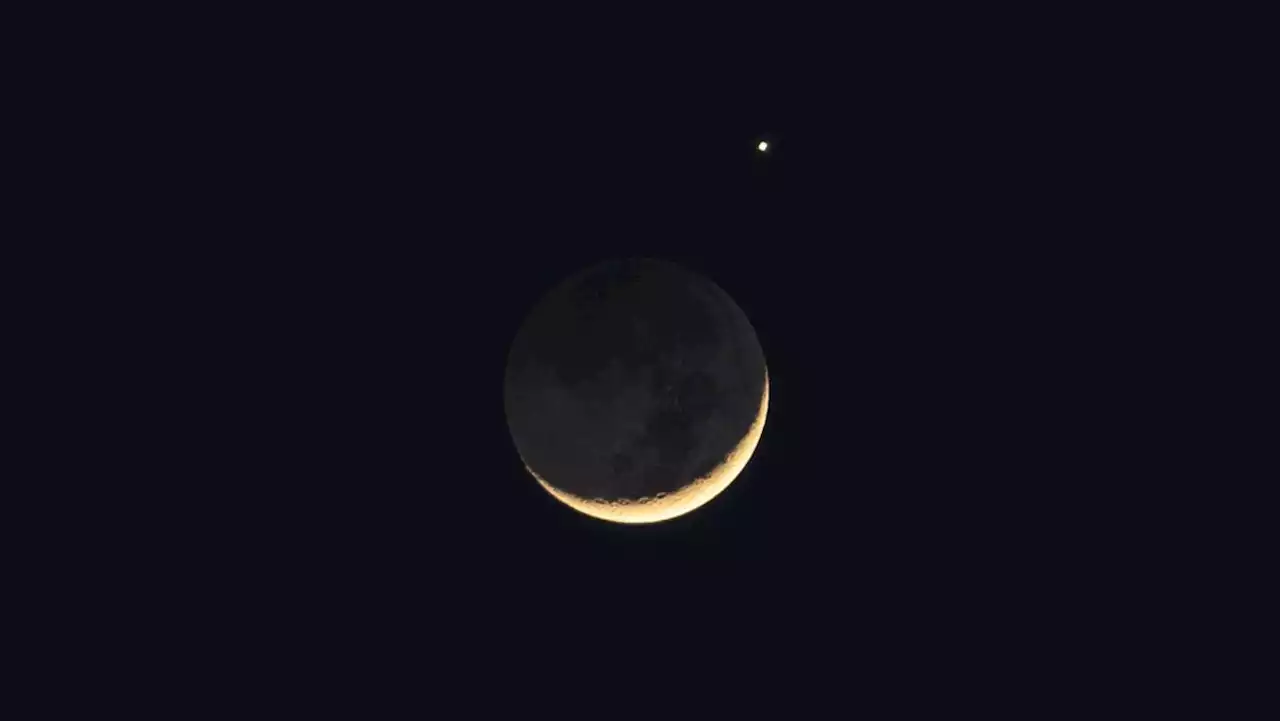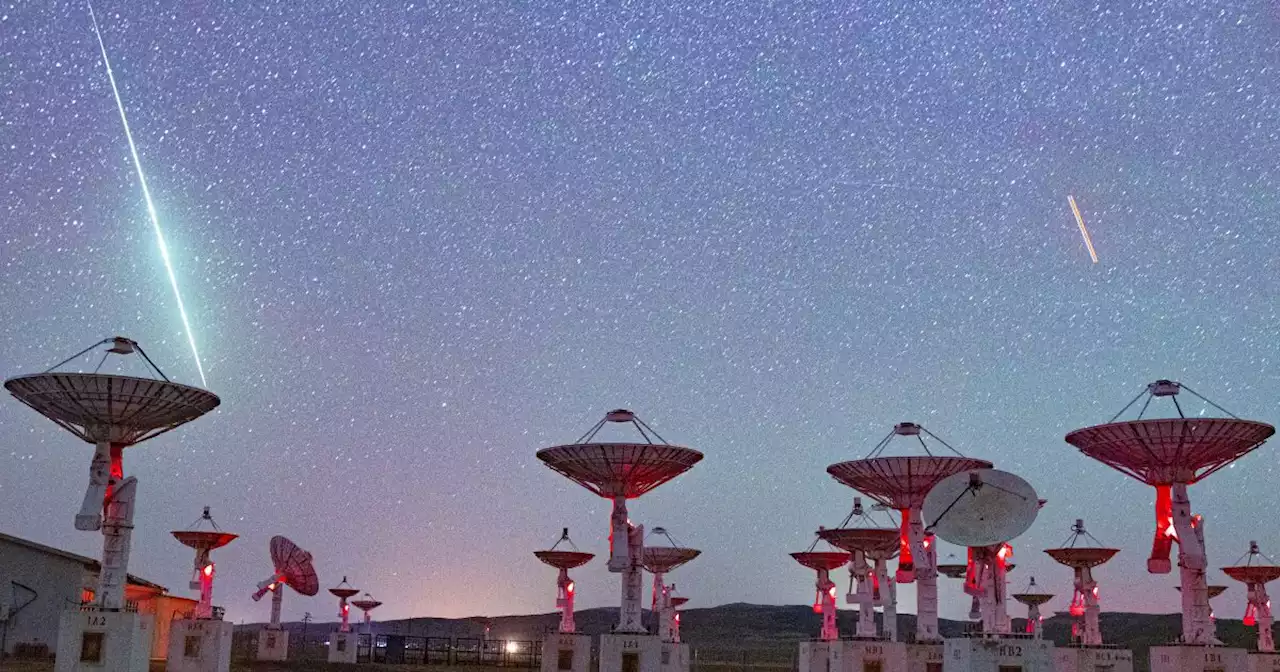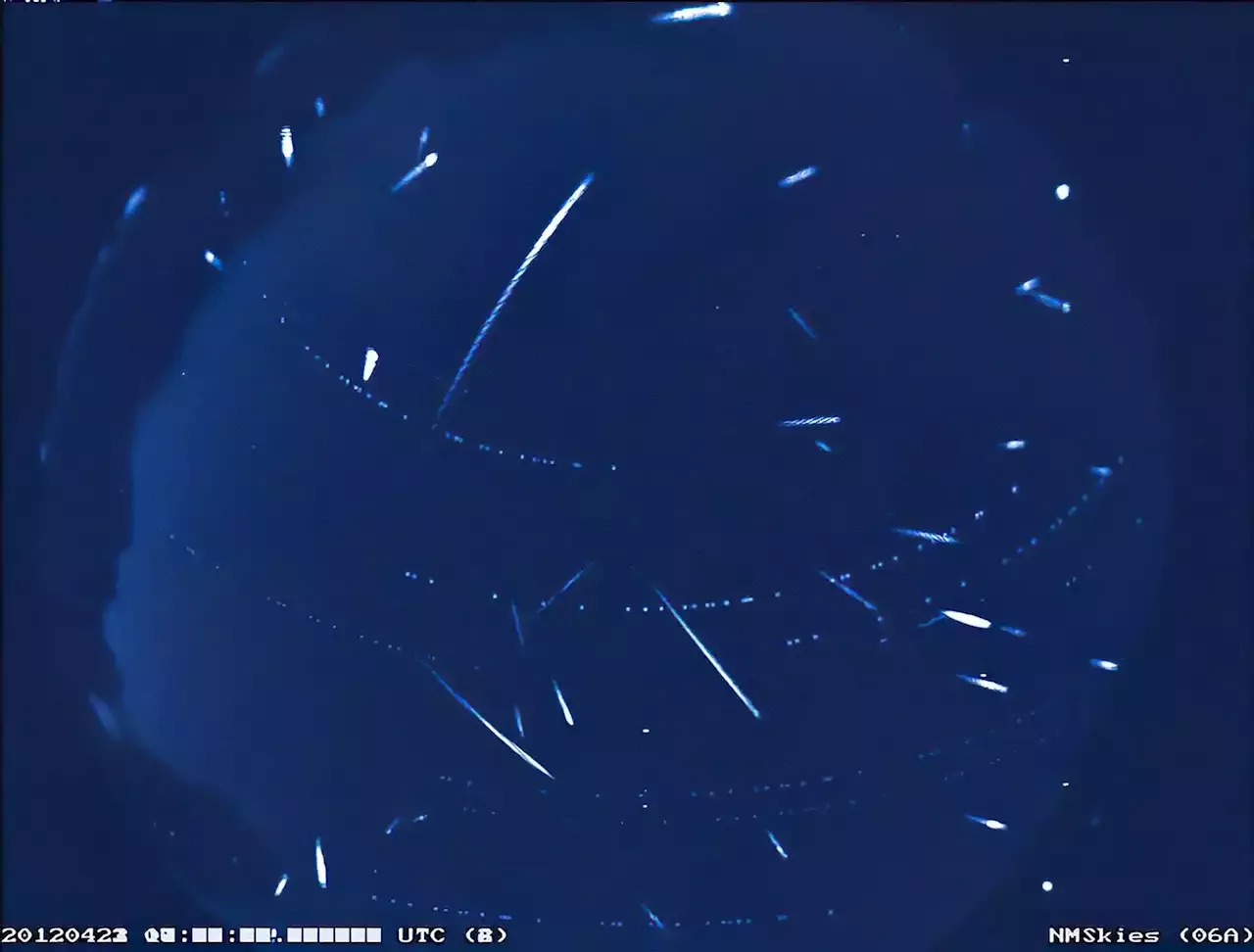The Lyrid meteor shower peaks on April 23 with up to 15 meteors per hour. The shower is one of the oldest in history, with records dating back 2,700 years. Lyrid outbursts remain difficult to predict, making regular observations crucial for improving models. To observe the Lyrids, find a dark l
Composite image of Lyrid and not-Lyrid meteors over New Mexico from April, 2012. Credit: NASA/ MSFC/ Danielle MoserThe shower is one of the oldest in history, with records dating back 2,700 years. Lyrid outbursts remain difficult to predict, making regular observations crucial for improving models. To observe the Lyrids, find a dark location away from city lights, allow 30 minutes for eyes to adjust, and avoid bright screens.
This year’s Lyrid meteor shower will peak in the predawn hours of April 23. On average, the shower can produce up to 15 meteors per hour under ideal viewing conditions. The Lyrids occur every year in mid-April, when Earth crosses the trail of debris left by the Comet C/1861 G1 Thatcher. These bits of comet burn up when they hit Earth’s atmosphere and produce this shower of shooting stars.
The common theme here is that Lyrid outbursts are surprises. Unlike some other showers, meteor researchers aren’t able to predict Lyrid outbursts as well. That’s why it is important to make observations each year so that models of its activity can be improved.allsky cameras were looking up, astronaut Don Pettit aboard thetrained his video camera on Earth below. Video footage has revealed breathtaking images of meteors ablating — or burning up — over Earth at night.
How can you best observe the Lyrids? After 10:30 p.m. local time on the night of April 22, find a dark place away from city lights with open sky free of clouds and look straight up. It will take about 30 minutes for your eyes to get acclimated to the dark. Don’t look at your cell phone – the bright light from its screen will interrupt your night vision.
Brasil Últimas Notícias, Brasil Manchetes
Similar News:Você também pode ler notícias semelhantes a esta que coletamos de outras fontes de notícias.
 Catch a falling star as the Lyrid meteor shower peaks tonightFind a spot well away from city or street lights, bring a blanket, and see this annual meteor shower for yourself.
Catch a falling star as the Lyrid meteor shower peaks tonightFind a spot well away from city or street lights, bring a blanket, and see this annual meteor shower for yourself.
Consulte Mais informação »
How to view the oldest known meteor shower from the Bay AreaThe Lyrid meteor shower is expected to reach its peak late Saturday night into Sunday morning, and Bay Area stargazers should be in for a dazzling spectacle.
Consulte Mais informação »
 See Venus and the moon dance with the 'Seven Sisters' during the Lyrid meteor shower SaturdayThe crescent moon, Venus and the Pleiades will reach conjunction during the peak of the Lyrid meteor shower this Saturday. Here's how to watch the stunning show.
See Venus and the moon dance with the 'Seven Sisters' during the Lyrid meteor shower SaturdayThe crescent moon, Venus and the Pleiades will reach conjunction during the peak of the Lyrid meteor shower this Saturday. Here's how to watch the stunning show.
Consulte Mais informação »
 Clear skies expected this weekend in San Diego County as Lyrid meteor shower reaches its peakAstronomers say that the recent new moon means that the sight of one of the oldest known celestial showers won't be diminished by moonlight.
Clear skies expected this weekend in San Diego County as Lyrid meteor shower reaches its peakAstronomers say that the recent new moon means that the sight of one of the oldest known celestial showers won't be diminished by moonlight.
Consulte Mais informação »
 Lyrid Meteor Shower 2023: How to Watch the Shooting StarsThe annual Lyrids are one of the oldest known meteor showers. Here’s how to enjoy this celestial spectacle.
Lyrid Meteor Shower 2023: How to Watch the Shooting StarsThe annual Lyrids are one of the oldest known meteor showers. Here’s how to enjoy this celestial spectacle.
Consulte Mais informação »
